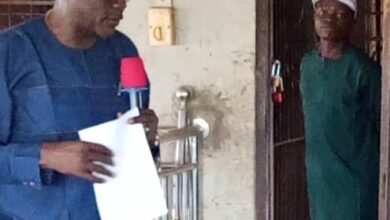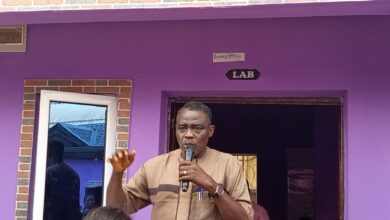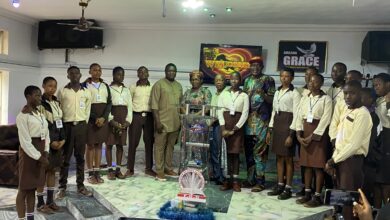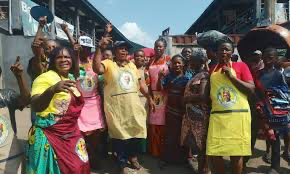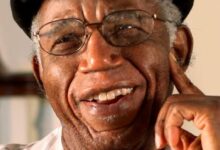Liberation Emphasised, Hope Raised as Soludo Visits St. Jude, Ihiala
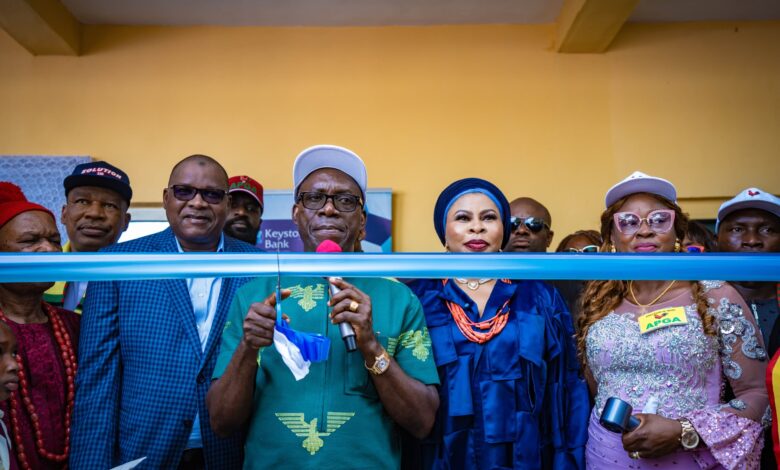
By Chuka Nnabuife | ANCISRO
ON SATURDAY, 11 October 2025, Governor Chukwuma Charles Soludo returned to Ihiala Local Government Area in a visit that echoed far beyond the boundaries of protocol. Officially, it was a commissioning ceremony — the unveiling of renovated facilities at St. Jude Secondary School, Ihiala, executed through the benevolence of Keystone Bank. Yet, beneath the ceremonies and speeches lay a deeper meaning: the homecoming of hope to a land once shrouded in fear.
At St. Jude Secondary School — affectionately known simply as “St. Jude” — Governor Soludo commended Keystone Bank for its corporate intervention in education, describing the project as an inspiring example of private-public partnership in social development. The newly refurbished classrooms, science laboratories, administrative offices, and assembly hall stood gleaming — symbols of renewal and progress.
“Without education, no nation can make meaningful progress,” the governor declared. “What Keystone Bank has done today truly touches my heart.”
A Professor of Economics and former Governor of the Central Bank of Nigeria, Soludo reiterated that education and health remain the twin pillars of human capital development. His words carried both conviction and vision — a reaffirmation that his government’s transformation agenda is deeply rooted in investing in people. He called on other institutions, both private and communal, to emulate Keystone Bank’s spirit of partnership in rebuilding public schools and restoring the dignity of learning across Anambra State.
Yet, Soludo’s presence in Ihiala that day went far beyond education. It carried profound emotional and historical resonance.
For more than four years, Ihiala had been under the shadow of insurgent terror. Armed groups had turned parts of the local government into strongholds of fear, forcing traditional rulers, business owners, and ordinary families to flee. The town’s once vibrant economy collapsed under the weight of kidnappings, killings, and arson.
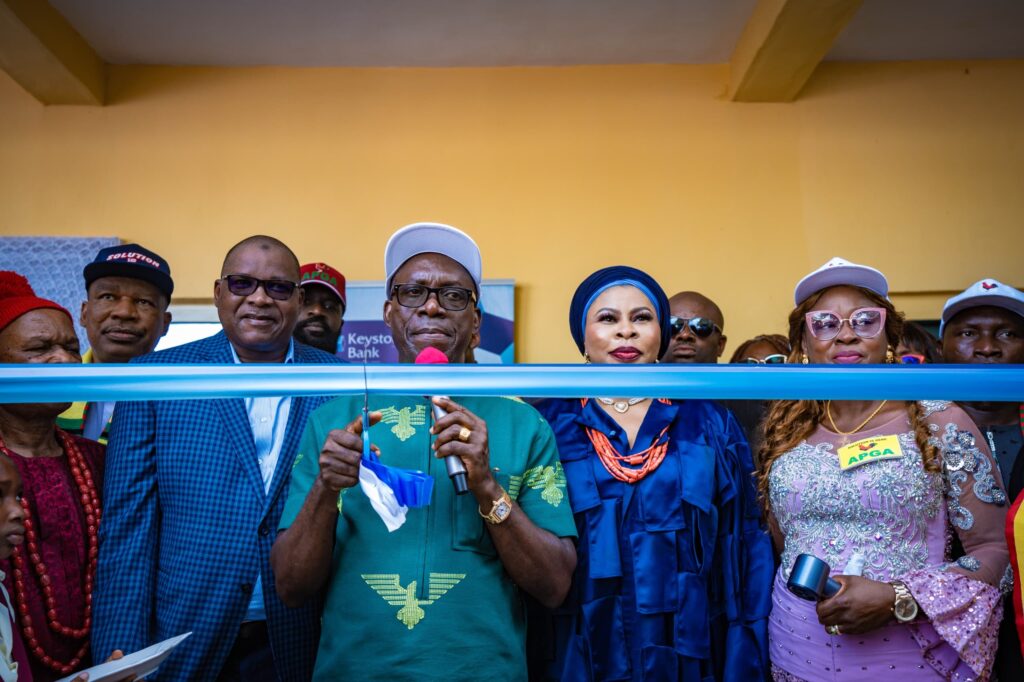
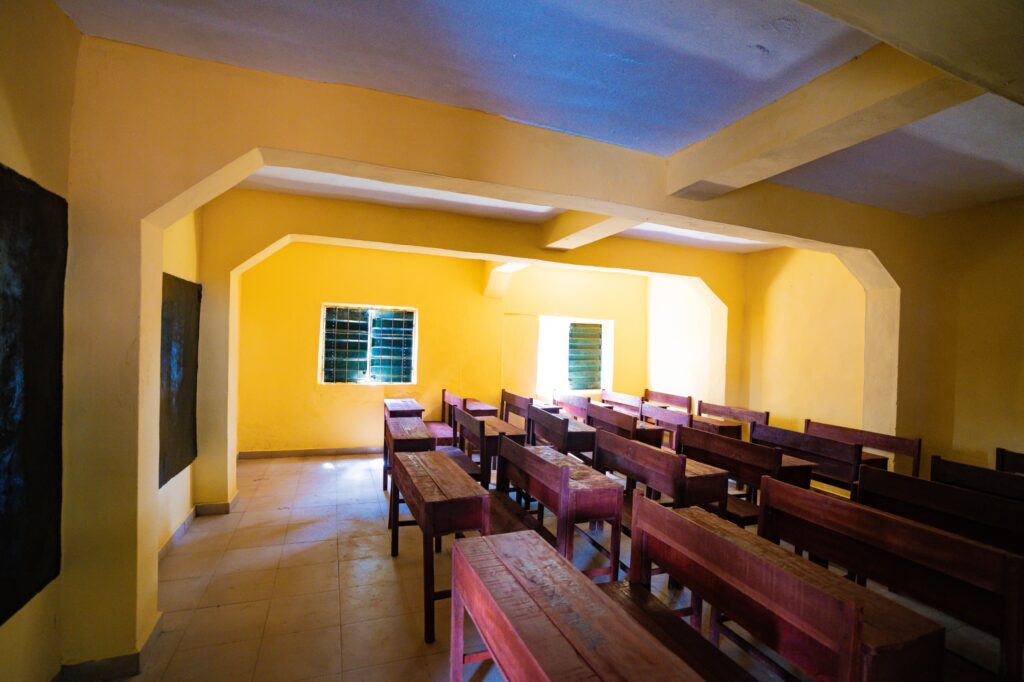

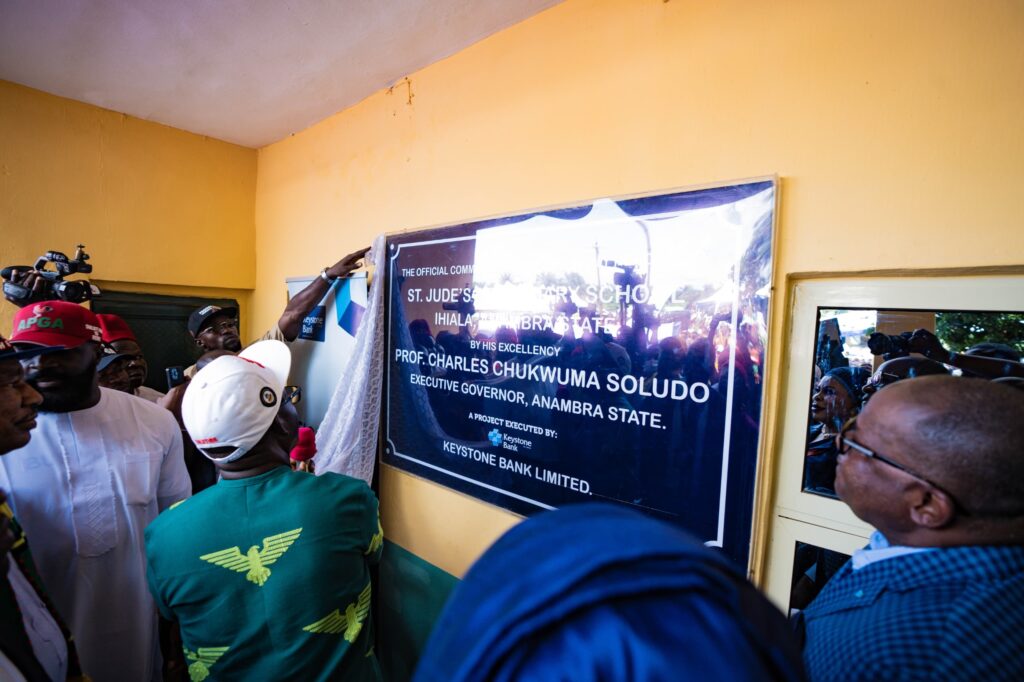
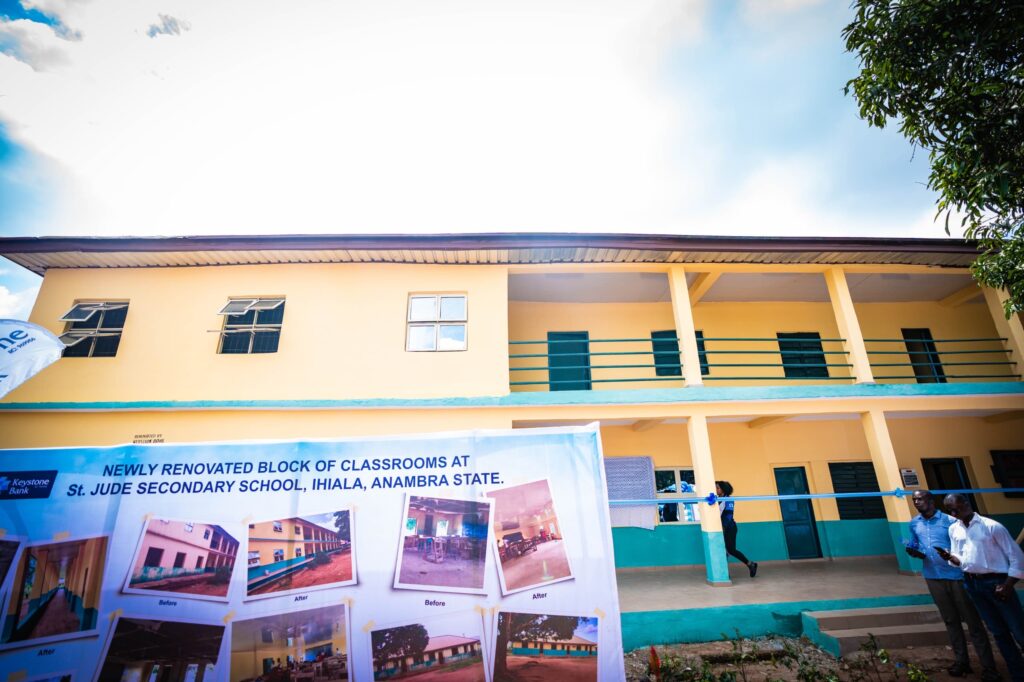
The crisis reached one of tragic climaxes in September 2021, when Soludo — then a governorship candidate — could not hold his campaign rally at St. Martin’s Primary School, Odo Ata, Ihiala. Before the rally could commence, gunmen stormed the venue, leaving pools of blood and casualties in their wake and forcing the rally to be abandoned. That day etched Ihiala’s name into the painful chronicle of communities yearning for peace. In similar trend entire families have been wiped out by the gunmen while towns and markets were sacked in the most crude an brutal manner by the gunmen whose regime were about blood letting and violence.
But history took a new turn under Soludo’s administration. Through coordinated security operations and the courage of local collaborators, Ihiala began to rise again. Camps of armed insurgents were dismantled, roads reopened, and families returned to homes long deserted. Against this backdrop, the governor’s return to Ihiala — and specifically to St. Jude — felt like the closing of a dark chapter. It was both symbolic and spiritual: a leader walking freely on ground that was once forbidden.
Indeed, St. Jude itself is a site steeped in history. Founded in 1958 by one of Ihiala’s early lawyers and entrepreneurs, the late Chief Sylvanus Jude Onyebukwa Obi, the 67-year-old school has long stood as a beacon of learning and resilience. During the Nigerian Civil War, it served as a military post. Decades later, in the height of the insecurity crisis, it became a Forward Operational Base (FOB) for security forces — a reminder of the community’s continuing struggle for peace and progress.
St. Jude occupies a proud place in the memory of Ihiala. Beyond its classrooms, it has produced generations of professionals, scholars, and sportsmen who have carried the town’s name far and wide. Its story, like Ihiala’s, is one of endurance and rebirth.
By stepping through its gates, Governor Soludo was not just commissioning renovated buildings — he was saluting the courage of a people who refused to surrender. The songs and cheers that greeted him were not orchestrated displays of politics; they were spontaneous eruptions of gratitude from citizens who had endured darkness and were now witnessing light.
The liberation of Ihiala stands today as one of the enduring successes of Soludo’s administration. The people’s open outpouring of appreciation during his visit was as emotional as it was political — a gesture of solidarity with their governor and an emphatic message to the remnants of insurgency: that Ihiala has reclaimed its freedom and chosen peace.
The event also carried a powerful moral message. It reminded the officers who fought to reclaim the area that their sacrifices were recognised, and it reaffirmed the citizens’ resolve to defend the stability that has returned. The joy that filled the air on that Saturday was more than celebration; it was catharsis — the cleansing sigh of a people reborn.
In essence, Soludo’s visit to Ihiala was a statement of renewal, healing, and shared hope. It reflected his vision of a “liveable and prosperous Anambra” built through collaboration, education, and the resilience of its people. More than an infrastructural unveiling, the day’s events represented an investment in the soul of a community — an affirmation that government and citizens can rebuild together when faith meets action.
Ihiala now stands as a living testament to recovery, unity, and the unyielding human spirit. And as Governor Soludo walked through the grounds of St. Jude Secondary School — a place once marked by fear, now illuminated by progress — it became clear that his visit was not just a political journey, but a homecoming of hope.
- Nnabuife, Managing Director of Anambra State Civic and Social Reformation Office (ANCISRO) writes from Awka



